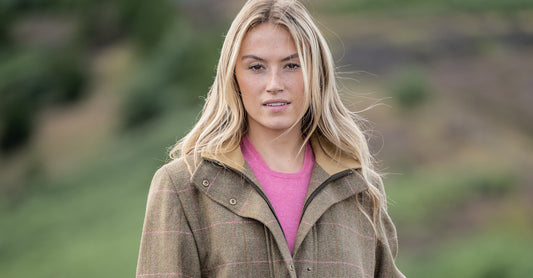
#WorldAppleDay 5 Outstanding Apples to Grow in Your Garden
11 Oct 2018World Apple Day, Sunday 21st October – what better time to plant an apple tree in your garden.
As World Apple Day approaches, garden designer and fruit tree fan, Susan Begg selects the best apple varieties to grow at home. Over the years at Semple Begg we’ve planted lots of apple trees, chomping our way through the produce in our quest to find the best apple trees for our clients. The list below is tried and tested - by no means definitive but it’s a very good place to start. Now, through to March is the perfect time to plant bare root apple trees.Ashmead’s Kernel
This tree was recommended to me by Mr Tweedie, who grows and sells fruit trees from his nursery in Dumfries without the slightest nod to the digital age. Don’t go looking for a website, you won’t find one. Mr Tweedie disdains of anything that doesn’t involve growing exceptional fruit trees. He’s well-worth seeking out – try here. If you are willing to go old school – including postage stamps and cheques – you’ll be well rewarded. What he doesn’t know about apples...and this… is his joint-favourite apple. It really is quite something. It looks more like an Asian Pear than an apple, dull and russet. But boy is it delicious, a damn fine apple, with almost a pear thing going on.
Uses: eating, juicing, cider, drying and is I believe exceptional for cooking too.
Available on a variety of rootstocks from M27 to M25.
Discovery
The storybook red apples produced by Discovery look like something Snow White would bite into. Pristine, rosy red skin that bleeds into the pale, white flesh – adding to the whole fairytale drama. It’s an early season apple, first to ripen in my garden and a magnificent sight at the end of summer. It’s such a heavy cropper, a beautiful vase shaped tree, its branches drooping with ruby fruits. Grow this and you will have masses to give away. It’s the best juicer ever, sweet pink juice with a hint of strawberry – that doesn’t oxidise and brown like other apple juices. You can keep it in the fridge for 3-4days if you add just a drop or two of lemon juice.
Beware: They have a very short shelf-life, the ones you buy in the shops aren’t a patch on apples eaten from the tree. Incomparable.
Uses: eating and juicing.
Available on a variety of rootstocks from M27 to M25.
Red Falstaff/Falstaff
I must admit to having been a little confused between Red Falstaff and Falstaff, they’re both offspring of Golden Delicious x James Grieve (a promiscuous, deliciously sharp tasting apple that’s fathered countless new varieties). Both have wonderful juicy flavour, are self-fertile and prolific producers of satisfyingly sized, medium apples. As the name suggests Red Falstaff is a more deeply hued red than his sibling whose complexion is flushed with russet orange and green. However, if you’d wondered what Mr Tweedie’s other favourite is, then it’s Falstaff. He didn’t say why he preferred it over Red Falstaff, maybe it’s because it’s the older variety and he’s a purist. Maybe because that’s what he had left on the rootstock I wanted. It really doesn’t matter because if you choose either then you’ve chosen well.
Uses: eating and juicing.
Available on a variety of rootstocks from M27 to M25.
Cox’s Orange Pippin
The lesson here is, just because something is well-known and popular you shouldn't avoid it. Trust me, I would be doing you all a disservice if I left this off the list. Biting into a Cox’s Orange Pipping may not be as surprising as the unexpected taste of Ashmead’s Kernel, it might not juice like a Discovery, or have the sweetness of a Falstaff but boy, oh boy does it pack a punch. Tasting notes reference melon, pear, orange and mango. A complex hierarchy of flavour that has set the benchmark for breeders since 1825. It suffers a little from scab (which doesn’t affect the flavour), and canker but is still highly prized and worth inviting into your garden.
Uses: eating, juicing, cider and cooking.
Available on a variety of rootstocks from M27 to M25.
Jumbo
An absolutely heroic little tree – no more than 1.5m tall - that throws out an abundance of enormous apples of the most glorious colour, flavour and texture late in the year when everything else has given up and gone to bed for winter. I have a little apple tree I inherited that I’m pretty sure is Jumbo and I think of it as the wee Glasgow hard man of the garden. Toughing it out to hold onto his amazing crop into December when all his leaves have fallen. A beautiful tree and without a doubt my favourite thing in my garden.
Uses: eating and cooking.
Only available on M27 dwarf rootstock.
Other things to consider when choosing an apple tree
There’s a lot to think about before planting an apple tree:
Pollination If you only plan to have one tree in your garden, it will need to be self-pollinating. If you plan to have more than one apple tree, you need to give careful thought to pollinating partners.
Size The eventual size of your tree. This will determine the rootstock you choose: from dwarf trees on M27 rootstock that won’t grow higher than 1.5-2m, to large standards on M25 rootstock that will top 4.5m.
Planting and Staking Planting and staking your tree properly is important if your tree is to establish well, maintain health and produce a good crop.
Where to buy and find advice:
J Tweedie’s Fruit Trees, Maryfield Road Nursery, Nr Terregles, Dumfriesshire, DG2 9TH (01387) 720880
Orange Pippin Fruit Trees www.orangepippintrees.co.uk Not just a seller but a fantastic resource with lots of advice on buying, planting and growing fruit trees.
If you enjoyed this post and know of anyone with a passion for homegrown apples, please use the social buttons to 'like' and 'share' this post. Thank you.


